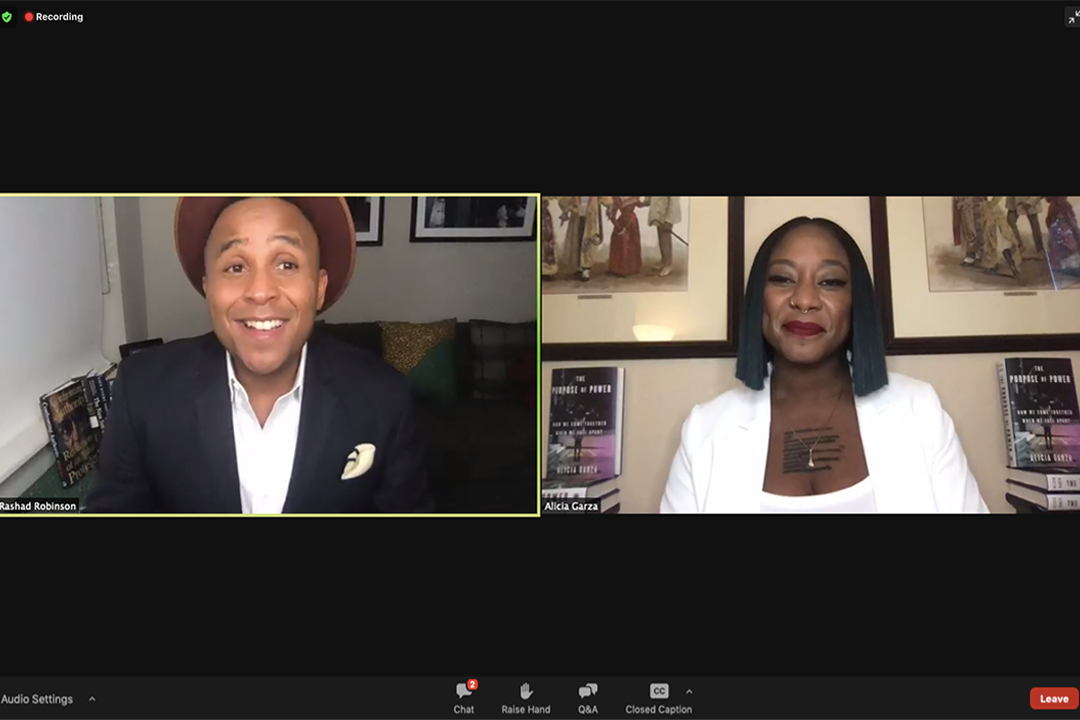By Briahnna Brown
Alicia Garza started fighting for change at 12 years old.
She wanted to make contraception available in nurses’ offices throughout her school district in Marin County, Calif., during a national conversation around family values that former President Ronald Reagan ushered in with the Moral Majority. Ms. Garza began to find power in pushing for sex health education, she said, and winning that campaign ensured that her peers had the opportunity to make the safest decisions for themselves.
“That really lit a fire in me around organizing,” Ms. Garza said. “There's something really powerful about seeing a problem, making a plan to change it and actually winning that change. I started to learn about what it means to bring people together in order to accomplish that.”
It was 20 years later, in 2013, that Ms. Garza penned what she called a love letter to Black people on Facebook after George Zimmerman was acquitted in the killing of 17-year-old Trayvon Martin. “Black people. I love you. I love us. Our lives matter,” she wrote, which sparked the #BlackLivesMatter hashtag that soon became a movement calling for racial justice around the world.
The Black Lives Matter Network, which Ms. Garza co-founded with Patrisse Cullors and Opal Tometi, serves as a resource for organizers and activists looking to make a stand against police brutality. Black Lives Matter also serves as a rallying cry for the ongoing protests this year in response to the police killings of George Floyd in Minneapolis, Breonna Taylor in Louisville, Ky., and Walter Wallace in Philadelphia.
Ms. Garza told her story during a virtual event hosted by Politics and Prose Live! and George Washington University to discuss her new book, “The Purpose of Power: How We Come Together When We Fall Apart.” After the event, Ms. Garza met with several GW students during a virtual Q & A, where she discussed navigating social movements.
[video:https://vimeo.com/472599922 width:100% align:center lightbox_title:The Purpose of Power: GW students meet and greet Alicia Garza, Co-Creator of Black Lives Matter]
Rashad Robinson, president of racial justice organization Color of Change, interviewed Ms. Garza during the event on Zoom about her book and what she hopes readers take away from reading it.
Her three primary goals in writing this book, she said, were to offer some clarity about how movements do and do not happen, tell her story in her own words and inspire people to make change. Ms. Garza said that this is the book that she wanted when she started organizing, and she hopes that readers seeking to become changemakers themselves find her book to be helpful.
Power is at the center of this book because it is the people behind the hashtags who make change, not just the hashtags themselves, Ms. Garza said. In trying to make change, movements have to happen both at the levels of policy and culture because neither is sufficient on their own, she said. The need for dignity and survival for everyone is at the core of social justice movements, she said, and those can only be achieved through having power.
“I really wanted us to be clear about the purpose of power, so we'd be inspired to fight for it, so we would stop being scared of having power and exercising power,” Ms. Garza said. “One of the challenges that our movements, not just…the Black Lives Matter movement, but all movements face, is what would happen if you became the decision makers? How would you do it differently? What would remain the same? How would you put more power in the hands of more people?
“These are the questions that changemakers have to be faced with, and they are serious questions,” she said.
“The Purpose of Power” is not the story of the Black Lives Matter movement, Ms. Garza said, because that story is still being written in real time. Instead, she hopes that this book serves as a snapshot of where the movement has been and where she hopes to see the movement go, including recognizing that there are a number of ways to approach reaching the shared goal of dignity and survival for all.
Being part of a movement like this helped Ms. Garza realize that this is an unprecedented moment similar to the past racial justice movements she read about as a child. Now is the time to think about how building power is critical to building a world that does not yet exist, she said.
“Our task right now is to give hospice care to the things that need to wither away…the levels of deep inequity, the levels of misery and pain, we need to make sure that that dies away,” Ms. Garza said. “We also, at the same time, need to be thinking about prenatal care for that which needs to be born, and that is the vision part.
“If we got rid of every terrible thing in society right now, what we build in its place and how do we get there, that is what movements are here to accomplish,” she said. “That is the role of a changemaker, and all of that requires power.”




